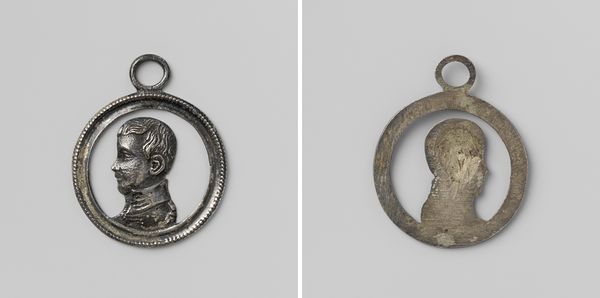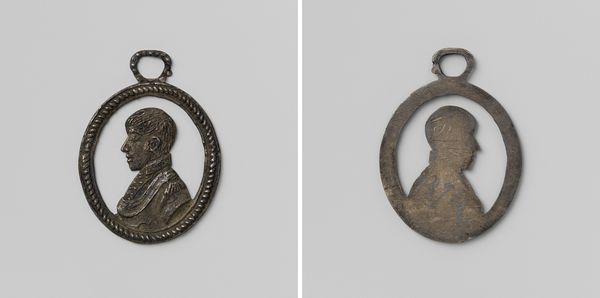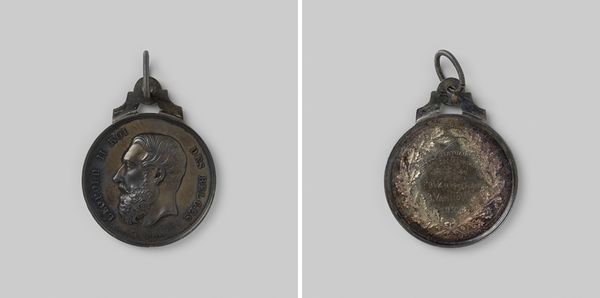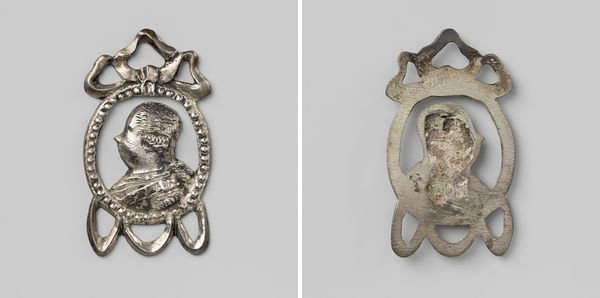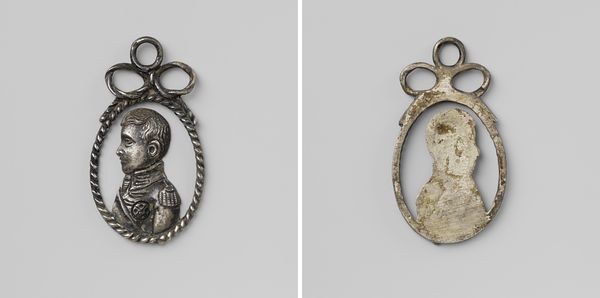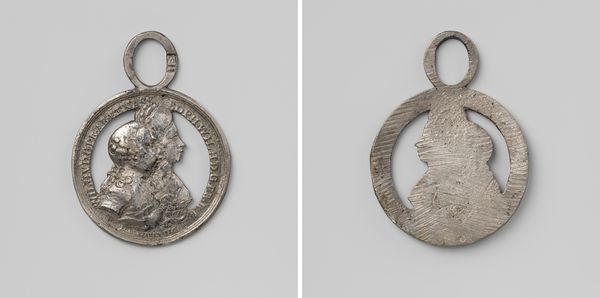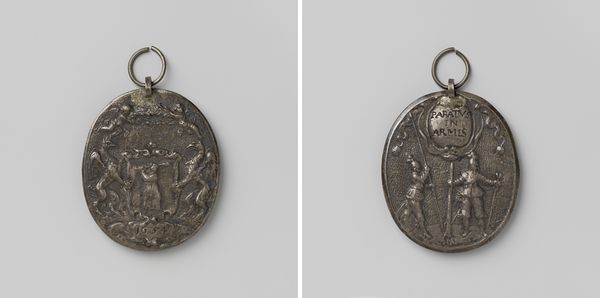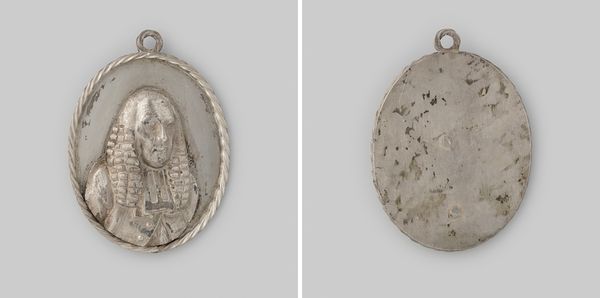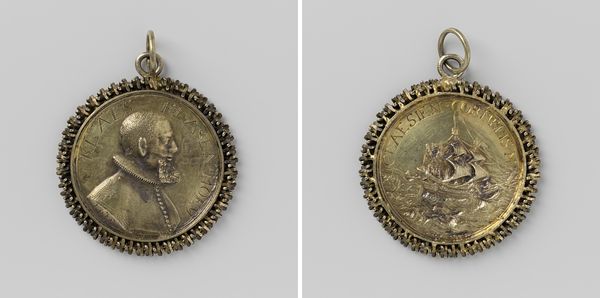
metal, relief
#
portrait
#
neoclacissism
#
metal
#
relief
#
miniature
Dimensions: diameter 3.7 cm, diameter 3 cm, weight 5.38 gr
Copyright: Rijks Museum: Open Domain
Editor: Here we have a miniature metal relief from 1813, an anonymous portrait of Willem Frederik, Prince of Orange-Nassau. The crisp profile within the circular frame feels very formal. What layers of meaning might we unpack here? Curator: Indeed. Think about the use of relief, a technique evoking ancient coinage and classical sculpture. The prince, in being rendered this way, inherits the connotations of steadfast leadership and enduring legacy associated with those forms. He becomes a symbol of resilience. Editor: Resilience in what sense? Curator: Consider the date, 1813. The Netherlands had just been freed from French rule. Willem Frederik's return symbolized the restoration of Dutch sovereignty. This isn’t just a likeness, it's a carefully constructed emblem of renewed national identity. A powerful totem of hope for the people. Editor: So, this object worked as a type of propaganda? A lucky charm? Curator: It's a bit of both, isn't it? Objects like these helped forge a visual language of patriotism. Imagine the emotional impact of holding such a potent, symbolic object close during a time of profound upheaval and national rebirth. What memories would the portrait contain in its beholder's imagination? Editor: I hadn't thought about it in those terms before. It makes the object seem less like a simple portrait and more like a vessel of cultural memory. Curator: Precisely. It carries the weight of a nation's hopes and history. That’s something to think about as we consider objects and their impact.
Comments
No comments
Be the first to comment and join the conversation on the ultimate creative platform.
